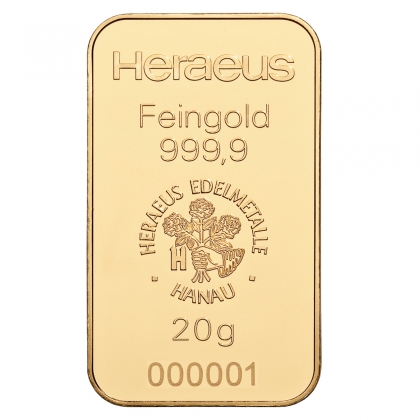I don't Need to Spend This Much Time On Gold News. How About You?
페이지 정보

본문
 The colours black, purple, and gold had become a well established symbol for the liberal, democratic and republican movement within the German states since the Wartburg Festival, and flags in these colours were flown en masse on the Hambach Festival. Such an instance is the Ur-Fahne, the flag flown from Hambach Castle through the festival: a black-pink-gold tricolour the place the crimson band accommodates the inscription Deutschlands Wiedergeburt (Germany's rebirth). Some members interpreted the colours as a rebirth of the Imperial black-yellow colours embellished with the red of liberty or the blood of conflict. Based on this, Adolf Soetbeer, secretary of the Hamburg Chamber of Commerce, suggested in the Bremer Handelsblatt on 22 September 1866 that any planned flag ought to combine the colours of Prussia (black and white) with the Hanseatic colours (crimson and white). Following the dissolution of the German Confederation, Prussia formed its unofficial successor, the North German Confederation, in 1866 with the signing of the Confederation Treaty in August 1866 and then the ratification of the Constitution of 1867. This nationwide state consisted of Prussia, the most important member state, and 21 different north German states.
The colours black, purple, and gold had become a well established symbol for the liberal, democratic and republican movement within the German states since the Wartburg Festival, and flags in these colours were flown en masse on the Hambach Festival. Such an instance is the Ur-Fahne, the flag flown from Hambach Castle through the festival: a black-pink-gold tricolour the place the crimson band accommodates the inscription Deutschlands Wiedergeburt (Germany's rebirth). Some members interpreted the colours as a rebirth of the Imperial black-yellow colours embellished with the red of liberty or the blood of conflict. Based on this, Adolf Soetbeer, secretary of the Hamburg Chamber of Commerce, suggested in the Bremer Handelsblatt on 22 September 1866 that any planned flag ought to combine the colours of Prussia (black and white) with the Hanseatic colours (crimson and white). Following the dissolution of the German Confederation, Prussia formed its unofficial successor, the North German Confederation, in 1866 with the signing of the Confederation Treaty in August 1866 and then the ratification of the Constitution of 1867. This nationwide state consisted of Prussia, the most important member state, and 21 different north German states.
In the following year, the constitution of the North German Confederation was enacted, where a horizontal black-white-purple tricolour was declared to be each the civil and conflict ensign. This alteration was not welcomed by many individuals in Germany, who noticed this new flag as a symbol of humiliation following Germany's defeat in the first World War. Upon returning from the battle, veterans of the Lützow Free Corps based the Urburschenschaft fraternity in Jena in June 1815. The Jena Urburschenschaft finally adopted a flag with three equal horizontal bands of pink, black, and crimson, with gold price today trim and a golden oak department throughout the black band, following the colours of the uniforms of the Free Corps. On 18 October 1817, the fourth anniversary of the Battle of Leipzig, tons of of fraternity members and academics from throughout the Confederation states met in Wartburg in Saxe-Weimar-Eisenach (in fashionable Thuringia), calling for a free and unified German nation. A visually near-similar flag was used because the nationwide flag of the Republic of Upper Volta, adopted upon the nation's independence in 1958 and used until 1984, when the nation was overthrown and re-established as Burkina Faso. The decades-old fear that German flag-waving and national pride was inextricably related to its Nazi past was dismissed by the tip of the tournament by Germans and non-Germans alike.
 As the members of this unit got here from throughout Germany and included a modest but well-known number of college students and academics, the Lützow Free Corps and their colours gained appreciable publicity among the many German individuals. Since the scholars who served within the Lützow Free Corps came from various German states, the concept of a unified German state started to gain momentum throughout the Urburschenschaft and similar Burschenschaft that were subsequently formed throughout the Confederation. In a memoir, Anton Probsthan of Mecklenburg, who served in the Lützow Free Corps, claimed his relative Fraulein Nitschke of Jena introduced the Burschenschaft with a flag at the time of its foundation, أسعار الذهب اليوم في كندا and for this function selected the black-red-and-gold colours of the defunct secret society Vandalia. Within the Reichswehr, the outdated colours continued to be utilized in varied types. Also, a naval war ensign used these colours. Trotsky, seeing the exhaustion of the armed forces, proposed that the battle be declared at an finish, but that the peace treaty not be signed. The Prussian-Austrian duality throughout the Confederation eventually led to the Austro-Prussian War in 1866. Throughout the war, the southern states allied with Austria adopted the black-red-gold price now tricolour as their flag, and the 8th German Army Corps also wore black-pink-gold armbands.
As the members of this unit got here from throughout Germany and included a modest but well-known number of college students and academics, the Lützow Free Corps and their colours gained appreciable publicity among the many German individuals. Since the scholars who served within the Lützow Free Corps came from various German states, the concept of a unified German state started to gain momentum throughout the Urburschenschaft and similar Burschenschaft that were subsequently formed throughout the Confederation. In a memoir, Anton Probsthan of Mecklenburg, who served in the Lützow Free Corps, claimed his relative Fraulein Nitschke of Jena introduced the Burschenschaft with a flag at the time of its foundation, أسعار الذهب اليوم في كندا and for this function selected the black-red-and-gold colours of the defunct secret society Vandalia. Within the Reichswehr, the outdated colours continued to be utilized in varied types. Also, a naval war ensign used these colours. Trotsky, seeing the exhaustion of the armed forces, proposed that the battle be declared at an finish, but that the peace treaty not be signed. The Prussian-Austrian duality throughout the Confederation eventually led to the Austro-Prussian War in 1866. Throughout the war, the southern states allied with Austria adopted the black-red-gold price now tricolour as their flag, and the 8th German Army Corps also wore black-pink-gold armbands.
Within the Franco-Prussian War, the remaining southern German states allied with the North German Confederation, resulting in the unification of Germany. The most controversial of these dated from earlier than the war, when, in March 1939, the BIS determined to honour an order acquired from the Czechoslovak National Bank to switch part of its gold reserves held in a BIS account on the Bank of England in London to a German Reichsbank account. Tayla Harris's bid to land at Hawthorn is up within the air after the Melbourne ahead wasn't part of a six-club mega deal finalised on Friday. The German Empire retained black, white, and red as its nationwide colours. This Frankfurt Parliament declared the black-crimson-gold because the official colours of Germany and handed a regulation stating its civil ensign was the black-pink-yellow tricolour. In May 1849, the bigger states actively fought the revolution and the Frankfurt parliament. The 1815-sixteen Congress of Vienna led to the creation of the German Confederation, a free union of all remaining German states after the Napoleonic Wars.
If you have any thoughts relating to in which and how to use أسعار الذهب اليوم في كندا, you can speak to us at our webpage.
- 이전글онлайн заведение Україна - ігрові автомати на гроші 24.12.23
- 다음글Patrycja Wenczyńska Dziwka Rydygier Kraków 24.12.23
댓글목록
등록된 댓글이 없습니다.


